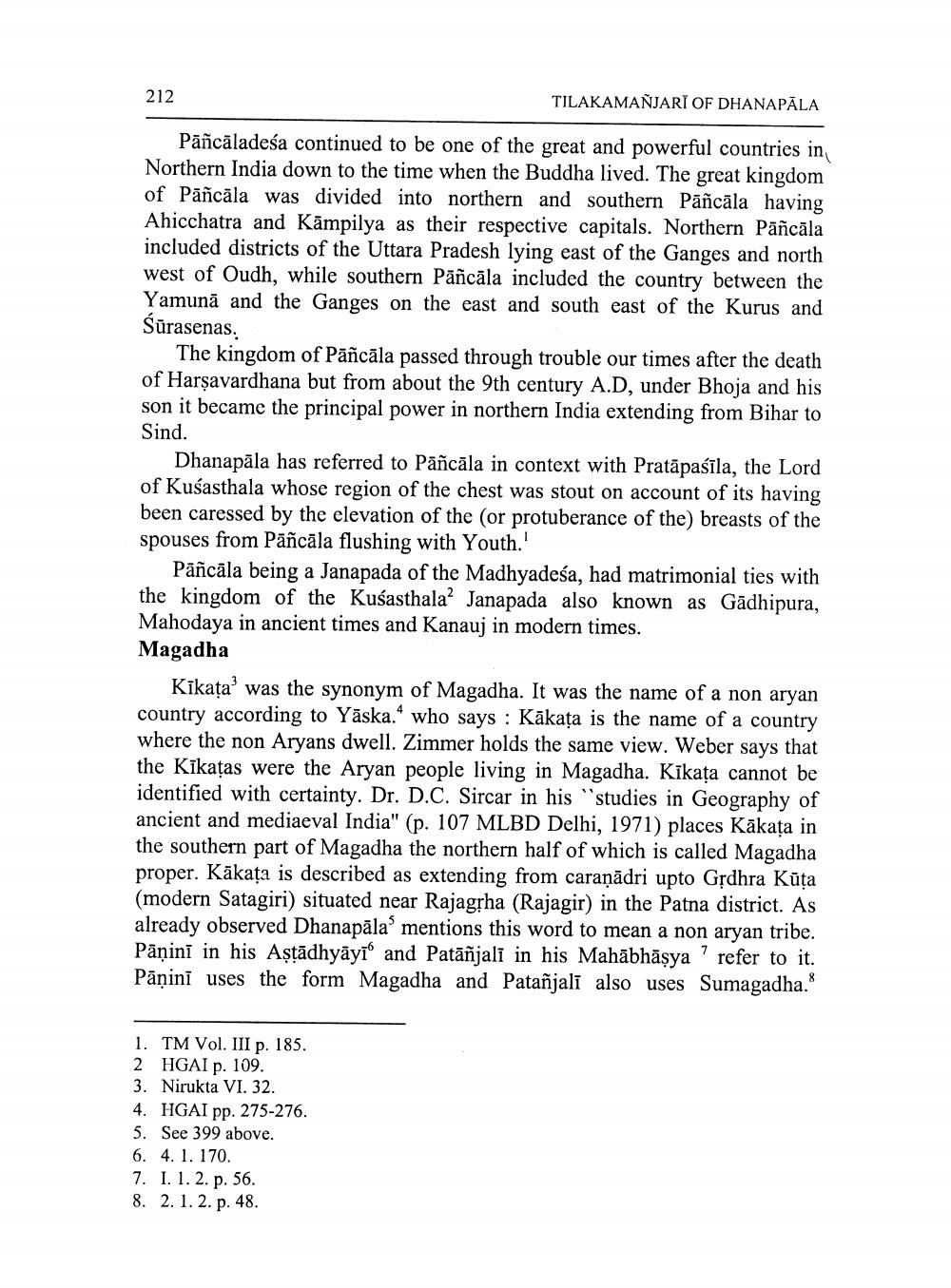________________
212
TILAKAMAÑJARI OF DHANAPĀLA
Pāñcāladeśa continued to be one of the great and powerful countries in Northern India down to the time when the Buddha lived. The great kingdom of Pāñcāla was divided into northern and southern Pāñcāla having Ahicchatra and Kāmpilya as their respective capitals. Northern Pāñcāla included districts of the Uttara Pradesh lying east of the Ganges and north west of Oudh, while southern Pāñcāla included the country between the Yamunā and the Ganges on the east and south east of the Kurus and Śūrasenas.
The kingdom of Pāñcāla passed through trouble our times after the death of Harşavardhana but from about the 9th century A.D, under Bhoja and his son it became the principal power in northern India extending from Bihar to Sind.
Dhanapāla has referred to Pāñcāla in context with Pratāpaśīla, the Lord of Kuśasthala whose region of the chest was stout on account of its having been caressed by the elevation of the (or protuberance of the breasts of the spouses from Pāñcāla flushing with Youth.
Pāñcāla being a Janapada of the Madhyadeśa, had matrimonial ties with the kingdom of the Kuśasthala? Janapada also known as Gādhipura, Mahodaya in ancient times and Kanauj in modern times. Magadha
Kikata' was the synonym of Magadha. It was the name of a non aryan country according to Yāska.“ who says : Kākața is the name of a country where the non Aryans dwell. Zimmer holds the same view. Weber says that the Kīkațas were the Aryan people living in Magadha. Kikata cannot be identified with certainty. Dr. D.C. Sircar in his "studies in Geography of ancient and mediaeval India" (p. 107 MLBD Delhi, 1971) places Kākata in the southern part of Magadha the northern half of which is called Magadha proper. Kākata is described as extending from caraņādri upto Grdhra Kūta (modern Satagiri) situated near Rajagrha (Rajagir) in the Patna district. As already observed Dhanapāla' mentions this word to mean a non aryan tribe. Pāṇini in his Aștādhyāyi' and Patāñjali in his Mahābhāşya 'refer to it. Pāninī uses the form Magadha and Patañjalī also uses Sumagadha.
1. TM Vol. III p. 185. 2 HGAI p. 109. 3. Nirukta VI. 32. 4. HGAI pp. 275-276. 5. See 399 above. 6. 4. 1. 170. 7. I. 1. 2. p. 56. 8. 2. 1. 2. p. 48.




